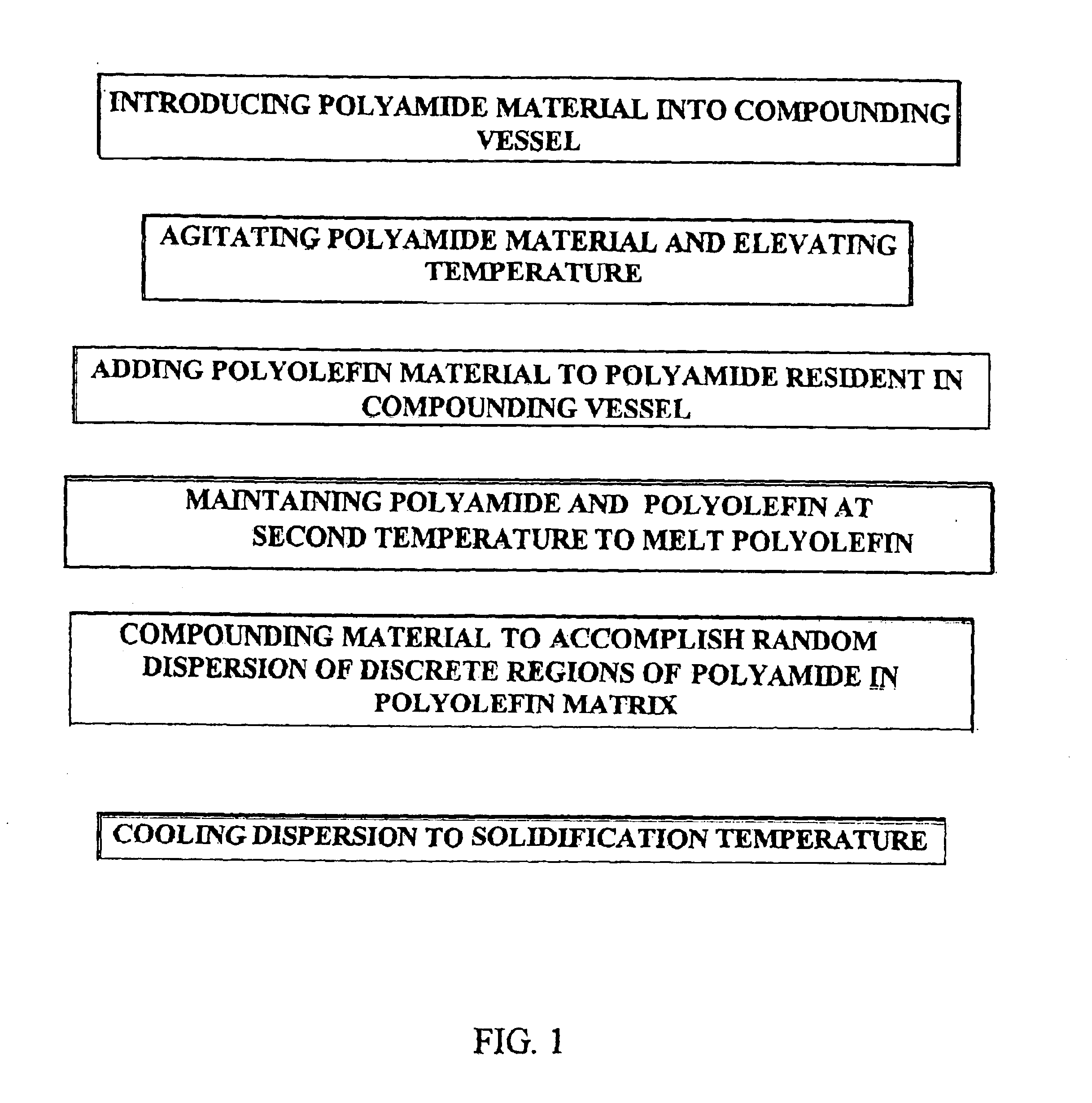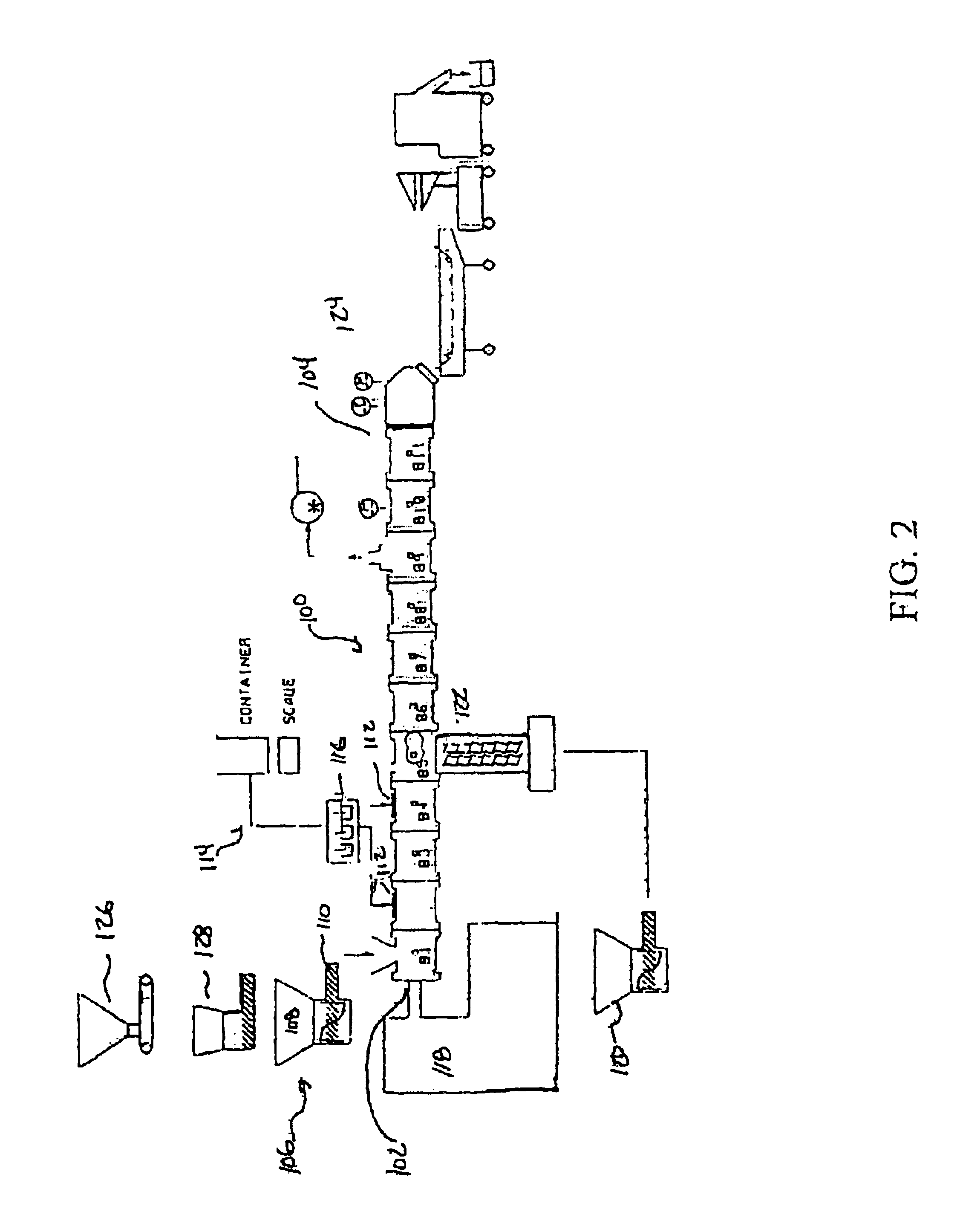Olefin-based thermoplastic alloy, process for making the same and molded parts containing the same
a thermoplastic alloy and olefin technology, applied in the field of unique polymer materials, can solve the problems of unsatisfactory physical characteristics, inability to meet the requirements of production, and inability to achieve cost-intensive and labor-intensive methods, and achieve the effect of suitable impact modification, effective and aesthetic molding, and unique physical characteristics
- Summary
- Abstract
- Description
- Claims
- Application Information
AI Technical Summary
Benefits of technology
Problems solved by technology
Method used
Image
Examples
example i
Preparation of the polymeric compound is accomplished by the introduction of polyamide 6,6 in an amount sufficient to provide a polyamide portion in the finished compound equal to 49% by weight. The polyamide 6,6 is introduced into a commercially available twin screw knead melt apparatus in pelletized form and is brought to a temperature sufficient to bring and maintain the polyamide in an essentially liquid state. Introduction temperature in the apparatus is 260° C. An amount of silicone oil equal to 0.1% of the total composition weight is added.
An amount of melt-processible pelletized polypropylene in a portion sufficient to provide polypropylene portion equal to 50.9% by weight is added to the agitating polyamide after melting of the polyamide has been achieved. Knead melting continues with the addition of the polypropylene.
A temperature drop occurs with the addition of the polypropylene to a process temperature between about 220 and 245° C. In this temperature range, the polyami...
example ii
A portion of the pelletized material produced in Example I is introduced into a suitable injection mold device with an associated closed cavity mold. The closed cavity mold is configured to produce a rectangular test piece of 2 inches by 4 inches by ½ inch.
The mold is filled with melted material and processed according to standard molding conditions. The resulting plastic part is tested and is against conventional polypropylene test parts. Molded parts made from the material as outlined are found to have greater scratch resistance.
Parts composed of the material prepared in Example I are cut crosswise. The cross section is analyzed. Elevated concentrations of polyamide component are found proximate to the outer surface of the part while elevated concentrations of polypropylene are found proximate to the interior of the part.
example iii
An additional amount of polymeric compound is formed according to the process outlined in Example L. The amount of polyamide in this test run is sufficient to produce 1% by weight polyamide in the resulting polymeric compound. The amount of polypropylene is sufficient to provide 98.9% by weight polypropylene in the resulting polymeric compound. Siloxane oil equal to 0.1% is also compounded.
PUM
| Property | Measurement | Unit |
|---|---|---|
| weight percent | aaaaa | aaaaa |
| softening point | aaaaa | aaaaa |
| melting point | aaaaa | aaaaa |
Abstract
Description
Claims
Application Information
 Login to View More
Login to View More - R&D
- Intellectual Property
- Life Sciences
- Materials
- Tech Scout
- Unparalleled Data Quality
- Higher Quality Content
- 60% Fewer Hallucinations
Browse by: Latest US Patents, China's latest patents, Technical Efficacy Thesaurus, Application Domain, Technology Topic, Popular Technical Reports.
© 2025 PatSnap. All rights reserved.Legal|Privacy policy|Modern Slavery Act Transparency Statement|Sitemap|About US| Contact US: help@patsnap.com


